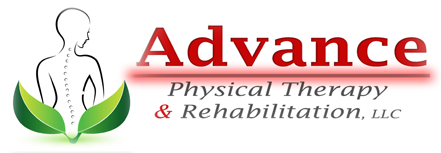16 Mar ACL Tears and Physical Therapy for Recovery
An ACL tear is a serious injury. If you don’t take care of this type of injury without delay, your mobility could be seriously impacted for the rest of your life. Learn more about ACL tears and the best ways to treat these types of injuries with physical therapy.
What Is an ACL Tear?
The anterior cruciate ligament (ACL) is a ligament in the knee. If this ligament is exposed to sudden kinetic force, it can tear or rupture, which results in intense pain and significantly reduced mobility.
In many cases, an ACL tear is accompanied by a loud popping sound that sometimes also causes a physical sensation. Certain types of physical activities that involve sudden changes of direction put intense pressure on the knee joint. Examples of physical activities that commonly cause ACL tears include skiing, soccer, basketball, and football.
Prescribed treatments for ACL tears depend on the severity of the injury. If the anterior cruciate ligament is torn all the way through, for instance, surgery may be necessary. In most cases, however, the ACL will heal itself if the proper conditions are established. Proper degrees of rest and physical therapy are usually sufficient to help an individual heal from an ACL injury.
How Do You Know if You’ve Torn Your ACL?
In some cases, it’s easy to know that you’ve suffered an ACL tear due to the characteristic popping sound that frequently accompanies this type of injury. ACL tears are usually accompanied by immediate pain, and swelling generally sets in shortly thereafter.
Not all knee injuries are ACL tears, however, so unless you’re certain that you’ve torn this particular ligament, you may want to wait a few hours to determine whether or not your knee pain and swelling will reduce without intervention. If your ACL is torn, however, your swelling and pain will persist, and you should go to the hospital or visit a physical therapist immediately.
How Do Physical Therapists Determine the Best Treatments for ACL Tears?
A variety of physical therapy treatments have been proven effective for ACL tears, and physical therapists use a number of diagnostic techniques to determine which treatments are appropriate for a patient’s ligament injury. The primary diagnostic technique that physical therapists use to determine the nature and extent of your knee injury is called the anterior drawer test.
To perform this test, your physical therapist will pull the shin bone on your injured leg forward while keeping your foot in place. If the shin bone on your injured leg moves forward more than the shin bone on your uninjured leg, it is usually possible to positively diagnose an ACL tear.
In some cases, your physical therapist may also order an MRI scan to determine the extent of your ACL injury. Once the status of your knee joint has been established, your physical therapist will consult your medical history and perform a functional mobility assessment.
Next, he or she will perform a gait assessment, evaluate your injury with palpation, perform range of motion assessments, and determine the strength of your knee joint. With this information, your physical therapist will be able to develop a comprehensive therapy plan.
What Are Some Components of an ACL Tear Physical Therapy Treatment Plan?
Here are some of the types of treatment that your physical therapist may perform to help your ACL injury heal:
Swelling Management
The swelling in a knee with an ACL injury is caused by inflammation, and this inflammation can usually be reduced with rest, ice, compression, and elevation (R.I.C.E.).
Strengthening Exercises
Exercises will be performed to improve the strength of your quadriceps. Additional strengthening exercises aimed at your hamstrings and hip muscles may also be performed.
Gait Training
Your physical therapist will help you learn to use your crutches, and he or she will also help you transition from walking with an assistive device to walking normally.
Pain Management
A variety of physical therapy techniques, such as transcutaneous electrical neuromuscular stimulation (TENS), may be used to reduce the pain associated with your injury.
Range of Motion (ROM) Exercises
Your physical therapist will guide you through a variety of ROM exercises to improve the mobility of your injured joint. Exercises like the prone hang may improve your knee mobility.
Balance Exercises
Certain physical therapy devices, such as wobble boards, may be used to help you regain your ability to balance on your injured knee.
Physical Therapy Exercises for a Torn ACL
Here are a few examples of some of the types of exercises that your physical therapist may recommend for your ACL injury:
1. Heel Slides
Sit on the floor with your legs outstretched in front of you. Bend the injured knee as you keep your heel on the floor. Slide your foot back to its starting position, and repeat this exercise 10 times.
2. Prone Knee Flexion
Lie on your stomach with your legs stretched straight out. Bring the heel on your injured foot toward your buttocks by bending your knee, and hold this position for five seconds. Repeat this movement 10 times.
3. Heel Raises
Stand and place a hand on a chair, rail, or counter to balance. Lift the heel of your injured foot upward while maintaining floor contact with your toes. Hold this position for five seconds, and repeat 10 times.
4. Half Squats
While standing, hold onto a sturdy support with both hands. With your feet shoulder-width apart, bend your knees and enter a half squat. Hold this position for 10 seconds, and repeat 10 times.
5. Knee Extensions
This exercise requires the use of an exercise band. Loop your exercise band around the leg of a table or another sturdy vertical beam. Loop the other end around your ankle, and bend your knee against the resistance of the exercise band. Repeat 10 times.




Sorry, the comment form is closed at this time.